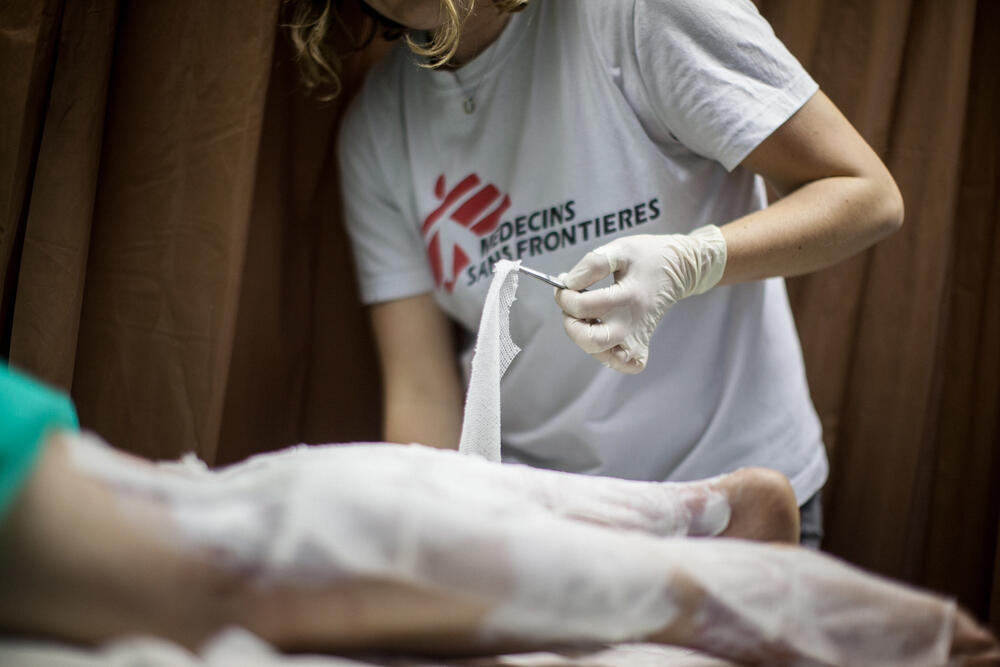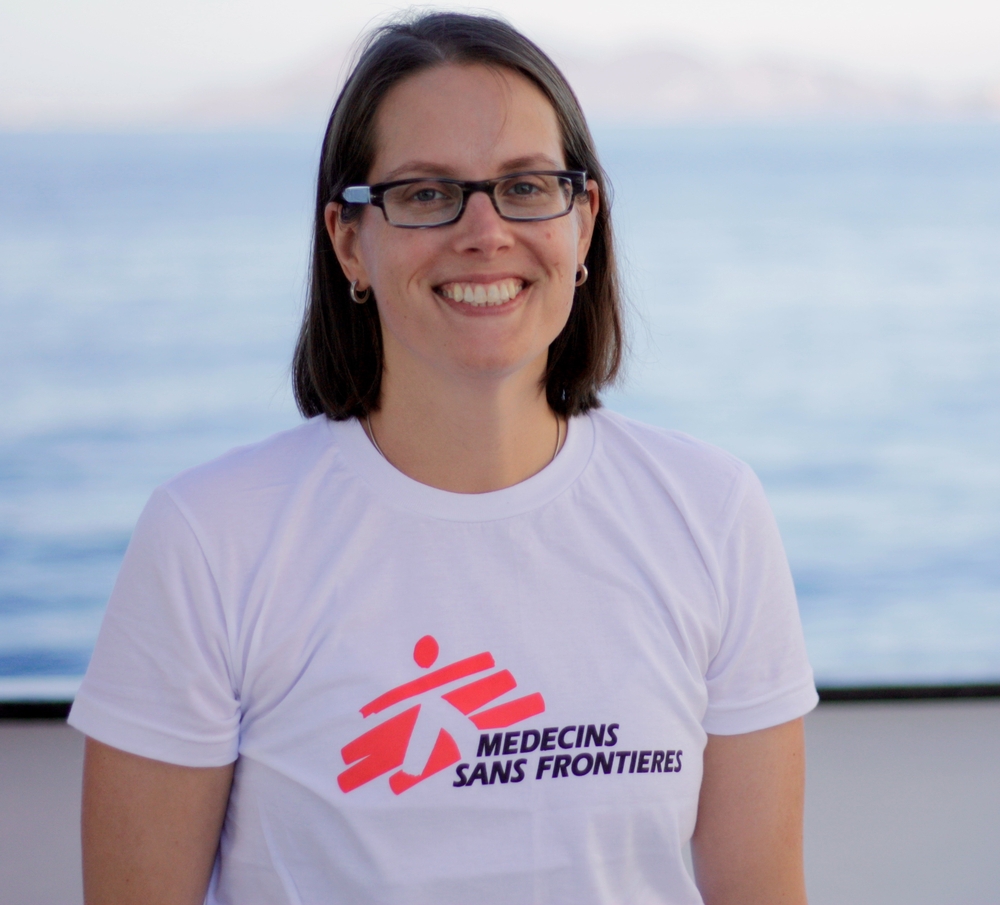What we mean when we talk about fuel burns
After the rush to save lives in a search and rescue operation, the next step is to care for the survivors. Many will have chemical burns caused by the mixture of fuel and sea water. Dr Sarah Giles explains...
Picture the effects of having a vegetable peeler applied to someone’s buttocks, plus or minus the backs of the legs, penis, testicles, and back. That’s what it looks like when some has fuel burns.
Fuel burns are actually a chemical burn rather than a thermal burn. Working as a doctor aboard the MV Aquarius, a search and rescue vessel run jointly by MSF and SOS Mediterranee, I’ve seen enough of these burns in the past four months to last a lifetime.
Frantic
Fuel burns occur when gasoline mixes with seawater and then comes in contact with human skin. In a remarkably short period of time, the skin begins to burn.
People sitting in the bottom of the boat are at highest risk of acquiring these burns when the canisters carrying gasoline leak, get knocked over, or the gasoline is dumped out in a frantic bid to bail out a sinking dinghy.
In the dinghies, women are the most likely to be found sitting on the floor as people erroneously believe it is the safest location in the boat.
At times, just touching their fuel-soaked clothing has been enough to make my latex medical gloves melt – imagine that on your skin...
No choices
The smugglers don’t give people leaving Libya a choice of how many people they’ll share the boat with and if they balk at the death trap they are being ordered aboard, people tell me they are beaten and forced at gun point to get on the rubber boat.
Dinghies have floors that have been reinforced with plywood to allow more people to be crammed aboard; I have seen as many as 167 people on a dinghy that you or I would sanely put 20 people in.
But the plywood, fixed on the floor with giant nails and screws that often puncture people’s feet, is not “marine-grade” wood. That means that the wood soaks up the water, expands, and then splits, with women often falling through the floor and getting trampled in the ensuing panic.
Tragically, when people are trampled on a leaky boat, they often drown in just a few inches of water.
Intensity and panic
Both the victims and the survivors’ bodies tell the tale of the epic battle for survival that often takes place on a sinking dinghy: scratches, bruises, bite marks, and fuel burns.
The burns are sometimes so intense that people jump out of their rubber boat because they are desperate to stop the pain and burning.
Unfortunately, they are rarely wearing a lifejacket and this precipitates yet another panic and crisis.
People who have extensive deep burns must be medievac’d off the boat because they are at high risk of dying...
What can we do?
When someone comes on board smelling of fuel, they need to strip off their fuel-soaked clothing and shower with soap.
Now that winter has come, that showering process has become increasingly unpleasant as hypothermic people do not want to take off their clothes in the wind and cold and jump into a luke warm shower. But they must shower or else they will continue to burn.
Some people need assistance in getting out of their clothes – at times, just touching their clothing has been enough to make my medical latex gloves melt – imagine that on your skin.
People who have extensive deep burns must be medievac’d off the boat because they are at high risk of dying.
|If not treated properly, these burns will go on to cause chronic pain, disfigurement, and horrific scars – a physical reminder of the emotional scars our patients have...
Vital care
Treating people with fuel burns is a slow process.
It takes two medics between 30 minutes and an hour to apply a proper burn dressing. If 15 people have fuel burns, our day is mostly consumed with this particular concern and it’s difficult to delve into other issues.
Complicating matters is the fact that tape cannot be applied to skin because the next day, the fragile skin will be agonizingly ripped off with the tape.
Tashan, one of our nurses, created a brilliant way of applying dressings to buttocks without using tape and it has really benefited the patients.
Avoidable scars
Most minor fuel burns will heal well with daily dressing changes and proper follow-up but it’s impossible for us to know what sort of follow-up these patients get in Italy.
If not treated properly, these burns will go on to cause chronic pain, disfigurement, and horrific scars – a physical reminder of the emotional scars our patients have.
And to think that all of this could be avoided if we could find a way to provide safe passage for those fleeing persecution, poverty, violence, and war.

